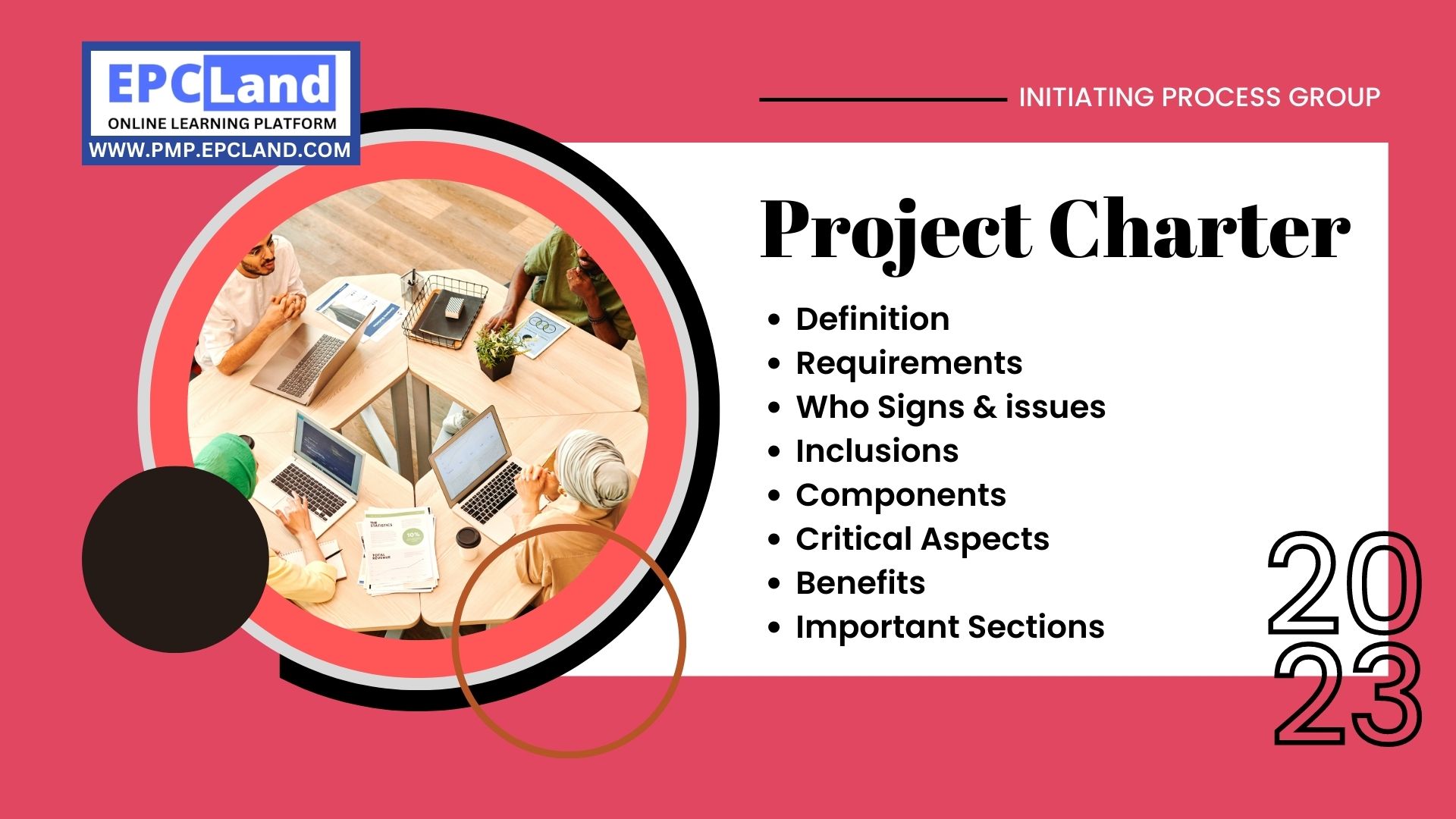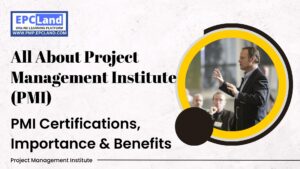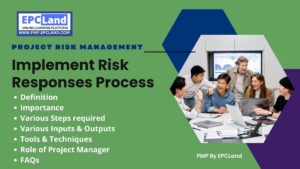Table of Contents
ToggleWhat is Project Charter
A project charter is a short document that clearly and concisely describes a project to senior management. A project charter outlines the entire project so that the team can quickly understand the goals, tasks, schedule, and stakeholders. It is an essential deliverable for any project and one of the first deliverables mandated by the PMBOK Guide and other best practice standards. This document contains important information about the project and also gives permission to start the project. It therefore serves as a formal announcement that a new approved project is about to begin. Project charters also include the appointment of a project leader who is responsible for the entire project.
Attempt Quiz-1 on Project Charter

Time's up
Why do we need a project charter?
As previously mentioned, the primary purpose of project assignments is to allow project managers to initiate approved projects and use organizational resources to achieve project goals.
A properly prepared charter also helps executives understand the business value of the project. You can also refer to the charter to understand how well the project aligns with corporate strategy.
Don’t Miss the 1000+ MCQ questions & hundreds of quizzes on PMP Knowledge Areas and Various important sections.
Who signs and issues the project charter?
The sponsor or initiator signs the project charter. The PMBOK® Guide, states:
“Projects are approved by someone outside the project, such as: The sponsor, PMO, or Portfolio Steering Committee. The initiator or sponsor of the project is at the appropriate level to fund the project. Create a project charter or delegate this responsibility to a project manager. The signature of the charter initiator approves the project. ”
It should be clearly defined who is responsible for funding and who must sign the document. A project charter should make it clear who is responsible for the funding and they should sign it!”
What is included in the Project Charter
Apply the SMART method when creating project charter. Be specific, make sure your goals are measurable, achievable, relevant to your project, and timely. A project charter includes:
- Purpose and goals of the project in clear and concise language
- Project requirements without very high level of detail
- A one or two paragraph description of the project that describes the project
- Project’s known high-level risk category
- Event calendar with beginning and end
- Important events or milestones along the way.
- A budget or summary of the costs of the project
- Your organization’s requirements for approval, such as what to approve, who to approve it, and how to obtain approval
- A key stakeholder or stakeholder who is responsible for what part of the project and approves the plan
- Introduction to project managers, project sponsors, and their authority levels
What are the components of Project Charter
A project charter is a living document that outlines the issues, goals, and framework of a process improvement effort. A charter should have six main components that make up the document. Each of these components helps define the rationale for the project, describes how it will improve the business, lists the steps required to complete the project, and identifies project responsibilities. increase. The components of a project order are:
- Problem
- Business case
- Goal statement
- Timeline
- Range
- Team member
When do you create project charter?
According to the PMBOK® Guide, project charter are created during the “Initiating” process. This process is one of the first processes executed in the project and is completed in the Initiating Process Group.
Attempt Quiz-2 on Project Charter

Time's up
What needs to be kept in mind while preparing Project Charter
Writing an effective project charter requires experience. But by following advice from a career expert who has learned how to write a great project charter, you can create a great project charter in no time.
Cut it short, please
Keep your project brief simple and short. The more pages it contains, the less likely it will be read.
To clarify
Try to reach the point as soon as possible. Project sponsors and other stakeholders are busy professionals who may not show interest or enthusiasm when reading vague summaries of the project.
build with sponsors
In most cases, the sponsor will pass it on to the project manager to create a project her brief. However, project briefs are always better with sponsor involvement, whether for support or to actually co-author and review documents.
Benefits of Project Charter
The main reason every project needs a project charter from the beginning is that it would otherwise provide evidence that an authorized project manager has defined and presented the project and has obtained approval from stakeholders to proceed. Project charter also have some advantages.
- Official approval to start the project
- Create a shared vision and understanding of the project
- Empower project managers to lead projects
- Identify the overall goals and scope of the project
- Define what success looks like at the end of the project
- Gain support for your project by publicizing it throughout your organization
- Ensure key stakeholders are informed about the project
- Secure project budget and resources
- Serves as a reference point for the project team
What are the important sections of Project Charter
Most project management methodologies and frameworks mandate the use of project charter, but do not define the actual content of the template. This is understandable, as projects vary in many ways, including project size, importance, type, and approach. However, the accepted principle in writing a project charter is that documentation should help clarify aspects and issues of the project, the what, why, who, when, and what. Looking at the PMBOK guide, the project charter contains the following sections, which answer these aspects and questions.
Project information
This section includes the name of the project, its ID (if your organization uses it), the project manager’s name, and its sponsor. It may also contain additional brief project description details. a business need, problem, or opportunity
In this section we will try to find out what is the main reason the project exists. Provide the context or circumstances that prompted the sponsor to initiate the project.
Project Goals and Benefits
List the goals your project is trying to achieve. A guide to writing goals is to use the acronym SMART.
They must be specific, measurable, achievable, realistic and time bound.
Project organization
This section identifies the people who will lead the project. A key role in its management and direction should be clearly identified. Using the RACI chart can be helpful.
Overview of project scope
This section outlines the high-level boundaries of your project. It’s important to identify what’s out of range, not just what’s in range. Displaying the main results of the project should also be included in this section. Rough project schedule
The project summary should outline the major phases and estimated duration of the project, including milestones. However, project managers should exercise caution when developing the project plan and assume that the project will begin shortly after approval.
Project budget overview
This section provides an overview of project budget requirements. This should include projections of capital expenditures and revenue expenditures.
Main assumption
This section presents the main assumptions made by the project team. It is also important to assess how these assumptions affect the project if the team later discovers that the assumptions are wrong or inaccurate.
Critical project risk
List the main risks that could affect your project if they occur. The project team assumes that encountering the identified risks is inevitable.
Achievement criteria
This section identifies key metrics that can be used to assess the success of your project. Measurable terms describe results that are acceptable to end users, customers, and stakeholders.
Summary
Have the sponsor sign the project charter as soon as it is created. Without releases, there are no formal approvals and permits, and there are no projects. We also encourage timely sharing of documents after approval. The more people in your organization who know what the project is about, the easier it is for supporters to get involved.
A project charter is a key document during the initiation phase of a project, so a good project brief will give your project a good foundation and a better chance of running smoothly through the rest of the phases.
Don’t Miss the 1000+ MCQ questions & hundreds of quizzes on PMP Knowledge Areas and Various important sections.










